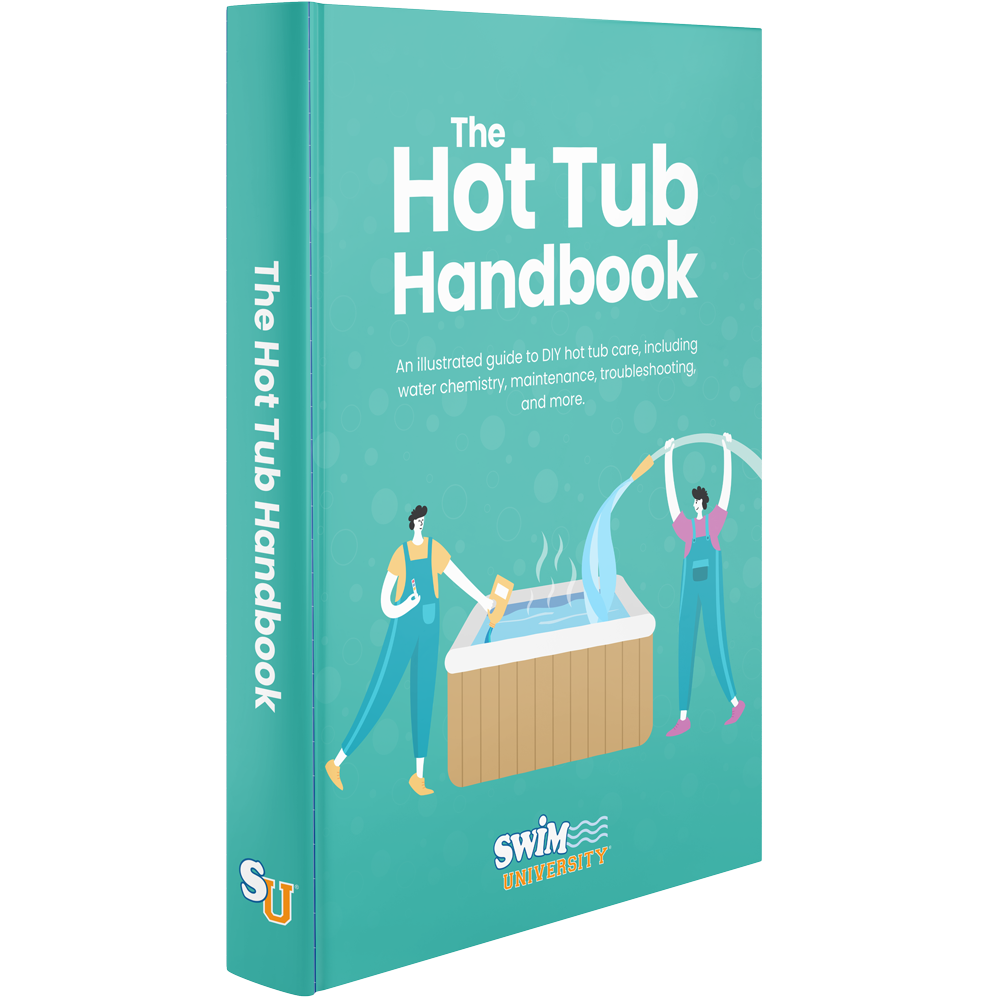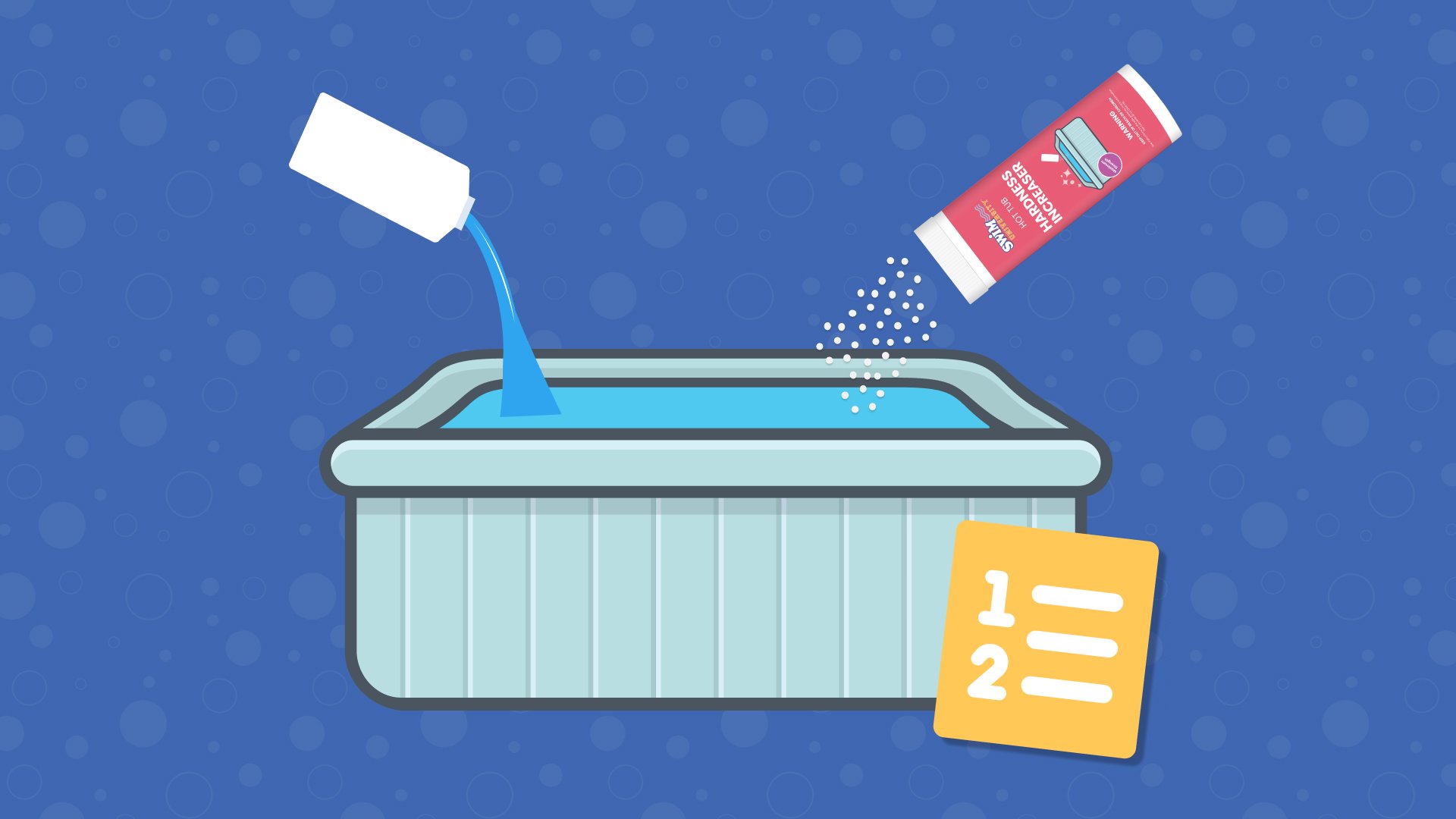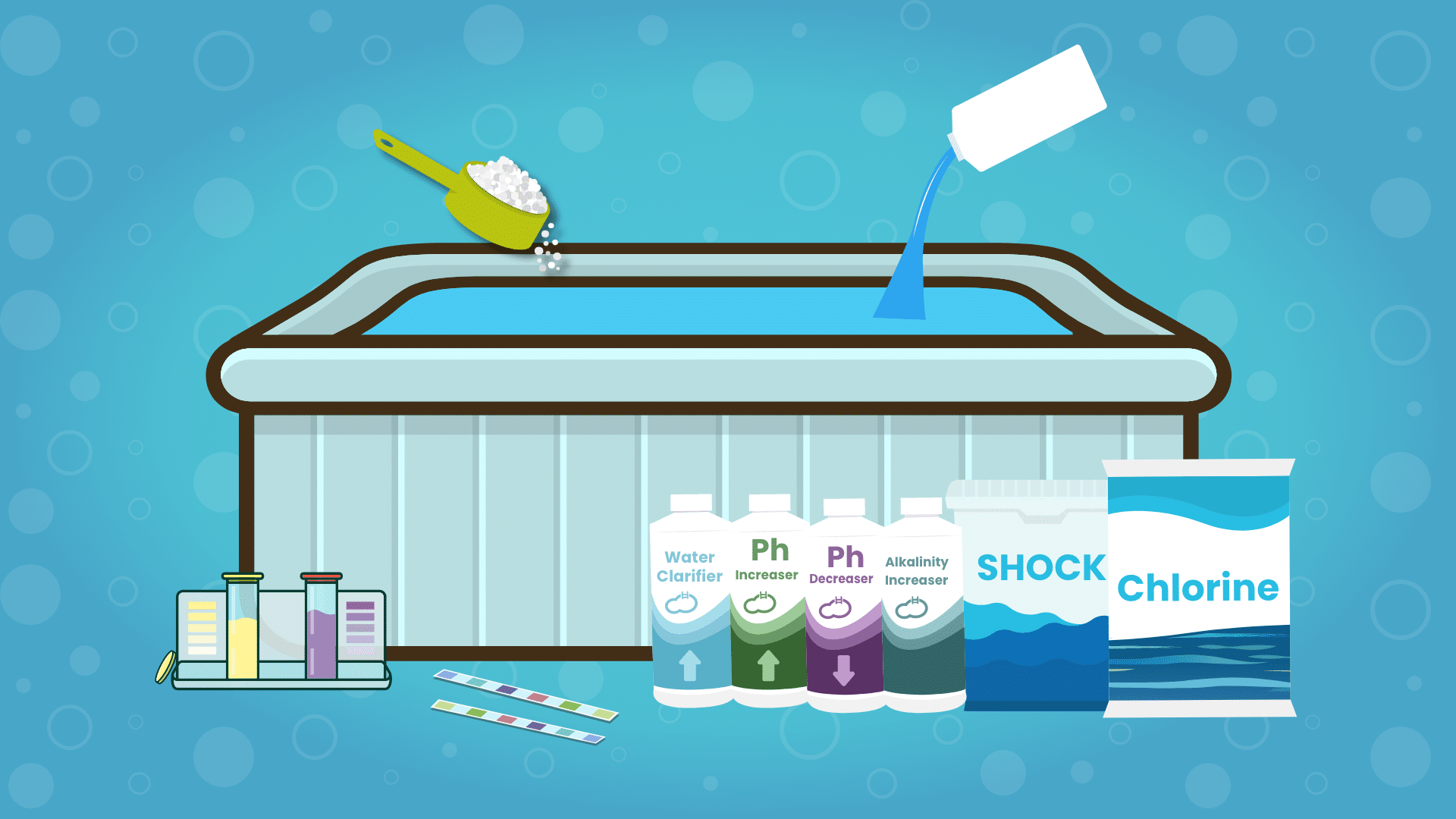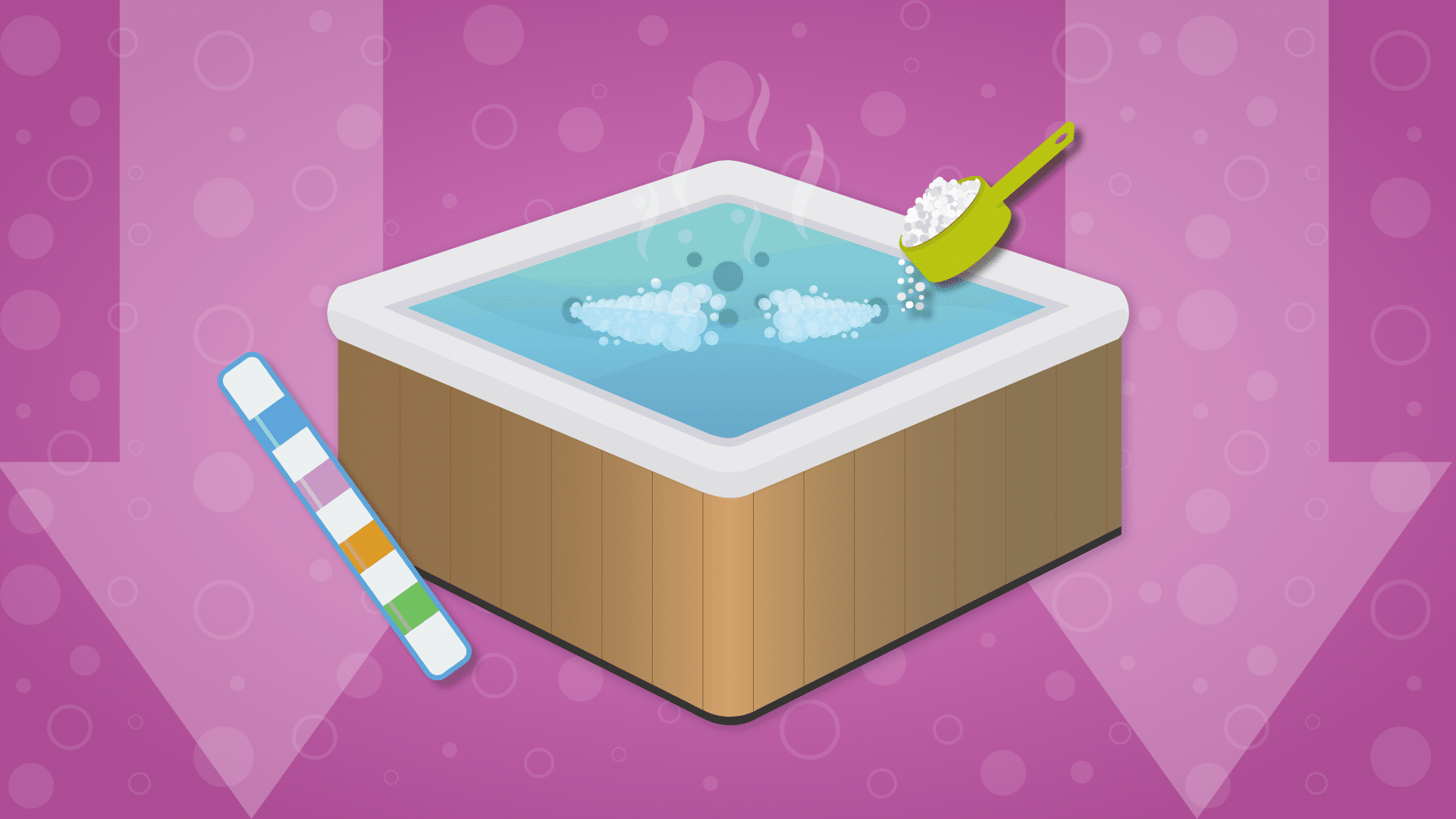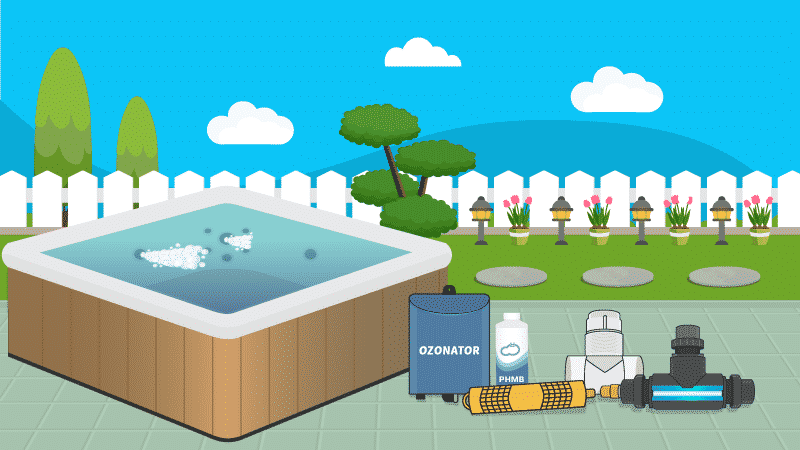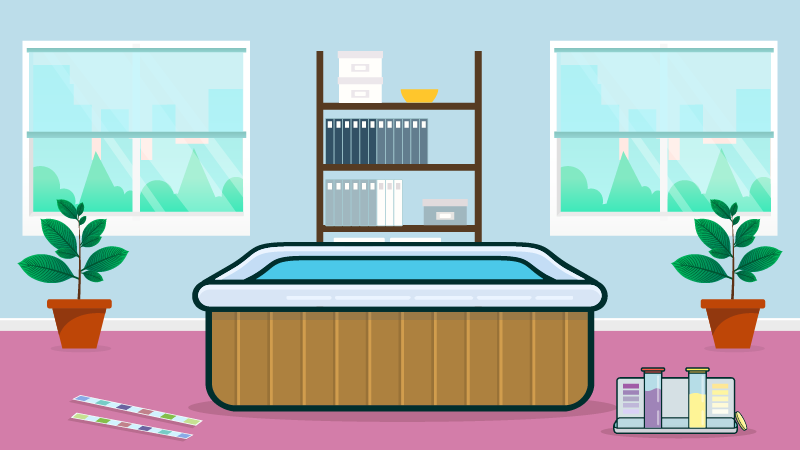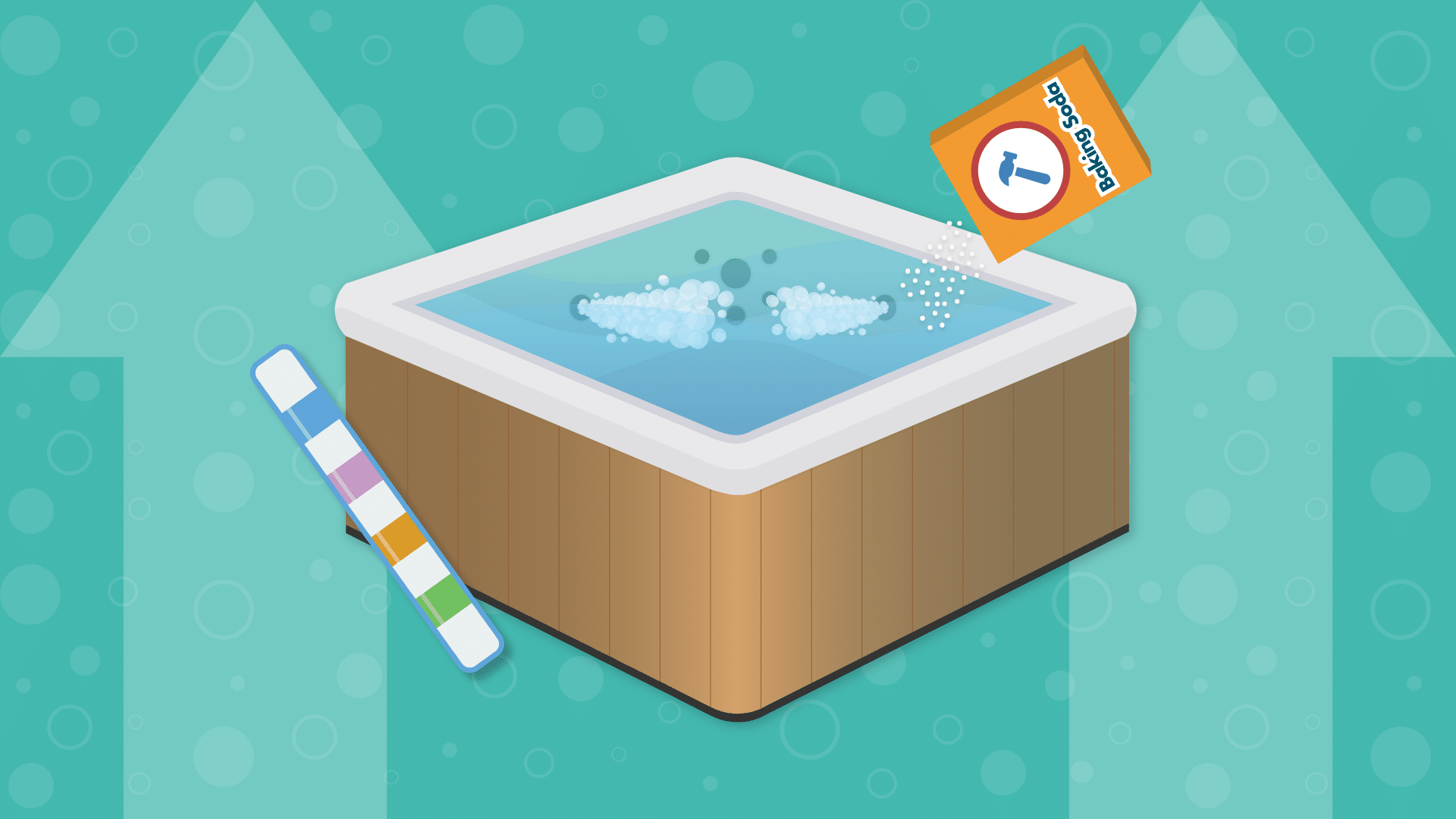The Complete Guide to Hot Tub Mineral Sanitizers
As effective a sanitizer as chlorine is, it does have some drawbacks. It’s rough on your hair and skin, for one. It’s not expensive, but still more expensive than other options. And if the level gets too low, you’ll find yourself dealing with chloramines. Not fun.
Before you resign yourself to brittle hair, dry skin, and having to wear a breathing mask in your spa, consider trying a hot tub mineral sanitizer. But before you just throw out the chlorine, get a complete understanding of what a spa mineral sanitizer is, how it works, and how it can benefit both you and your hot tub.
Learn how to keep your hot tub clear while saving money so you can enjoy more soaking time without big costs. The Hot Tub Handbook covers every type of hot tub on earth.
What is a Hot Tub Mineral Sanitizer?
When you think of minerals, what comes to mind? Calcium, sodium, potassium, Flintstone vitamins? What about silver and copper? They’re minerals too, and they’re what make spa mineral sanitizers work.
Silver has been used as an antibacterial since Roman times, and copper has been shown to fight algae. In fact, it’s the active ingredient in a lot of the algaecides sold for pools and spas.
Hot tub mineral systems put silver and copper to work to keep your spa clean and free of bacteria and algae. Some also include limestone. This mineral absorbs the acid from chlorine, which helps maintain a neutral pH level.
But should you choose a mineral sanitizer over chlorine or bromine?
Hot Tub Mineral Sanitizer Benefits
Before you just go with chlorine because it’s what you know, consider what hot tub minerals have to offer.
You’ll Use Less Chlorine (or Bromine)
Using a mineral sanitizer means you can use less chlorine, which means the water won’t be as harsh on your skin. And because you’ll need so little chlorine, you also won’t have a problem with chloramines, or the nasty smell they produce.
They’re Less Expensive
Hot tub minerals don’t cost as much as chlorine, bromine, or other sanitizers. Also, you only have to change out a mineral cartridge every few months, provided your hot tub doesn’t get a lot of heavy use.
They’re Easy to Manage
With a spa mineral sanitizer, there’s no measuring out chemicals to add them to the water, and then waiting for them to disperse before you can use your hot tub again.
Reduce the amount of chlorine (0.5ppm) you use in your hot tub by adding this mineral sanitizer to your filter system and let the power of minerals sanitize your water.
Hot Tub Mineral Sanitizer Drawbacks
We can’t think of any reasons not to use spa minerals, but we do think you should be aware that they do have a couple of downsides.
Watch Out For Stains!
Remember, copper is one of the active ingredients in mineral sanitizers. It’s also a common cause of staining in hot tubs. And if you already have high copper content in your water source, adding more copper to the mix is just asking for a stained spa shell.
If this is a concern, you can use a metal sequestrant to keep the copper from settling on any surfaces so it can be filtered out of the water.
Important: If you do use a metal sequestrant, do so sparingly. Remember, copper is often one of the active ingredients in mineral sanitizers. Too much sequestrant can possibly make the mineral sanitizer less effective.
You Still Need Chlorine or Bromine
Minerals alone aren’t enough to properly sanitize water. You need to supplement spa minerals with chlorine or bromine to fully clean the water, and more importantly, to kill bacteria and viruses.
Easy to add chlorine to your hot tub with granules (powder) and a cap that's perfect for measuring the amounts you add.
Are You Really Spending Less?
While minerals may be less expensive than chlorine, you do still need chlorine or bromine, so you’re actually paying for two sanitizing chemicals. Depending on how often you use your hot tub, and how well balanced you keep the water, the cost for both chemicals may be less than or possibly even the same as using chlorine alone.
Once you’ve weighed the pros and cons, if you decide a hot tub mineral sanitizer is the way to go, it’s an easy process to get started.
Spa Mineral Sanitizer Types
One clear advantage hot tub minerals have over chlorine granules and bromine tablets is that there’s no measuring, and no gloves needed to handle them. They’re available in three forms.
Filter Sticks
This is the easiest type to use. You simply insert a “stick” into the filter. As water passes through the filter, it also passes through the stick, releasing minerals into the water that makes its way back into your hot tub.
Inline System
This type of spa mineral sanitizer is made by Frog, and is a little more complex because your hot tub has to have an inline system pre-installed. It’s a compartment into which you slide the part that holds the cartridges.
If your hot tub doesn’t already have this compartment, you can use the filter stick or the floating dispenser and get the same sanitizing and benefits.
If you’re thinking about buying a hot tub, and you want the inline system, you’ll need to get your spa from Marquis Spas, Caldera Spas, Artesian Spas or Hot Springs Spas. They all have the in-line system installed on select models. Be sure to ask about this before you make your purchase.
Floating Dispensers
The second-easiest option, all you have to do is connect a mineral cartridge and either a chlorine or bromine cartridge to a floating dispenser, and then let it float in your spa. The minerals are released at a constant rate to keep the water clean. One cool benefit—you’ll know it’s time to replace one or both of the cartridges when the dispenser turns on its side.
Whatever type you choose, be sure to follow the manufacturer’s instructions.
FROG Serene Floating Sanitizing System kills bacteria 2 ways, with FROG Sanitizing Minerals and up to 50% less bromine*. With less bromine you'll enjoy softer feeling water that's easier on skin, swimsuits and hot tub surfaces.
How to Use Hot Tub Minerals
If you’re converting to minerals from any sanitizer other than chlorine or bromine, you may want to completely drain and clean your hot tub before adding minerals.
If you’ve been using chlorine, just let the level drop to at least 0.5 parts per million (ppm) before you begin. For bromine, let it drop to at least 1 ppm.
Test Water Hardness
Starting From Empty: Test the hardness of your water source. You can do this with test strips or a liquid test kit. If it’s over 250 ppm, use a hose filter when filling the spa. This is a good idea anyway to remove and reduce some impurities, such as copper.
Starting From Full: Test the water in the hot tub, and make sure the calcium hardness level isn’t over 250 ppm. If it is, drain some of the water from the spa, then refill with fresh water, using a hose filter. Repeat as necessary until the calcium hardness level is in the correct range.
Fill your pool or hot tub with this hose filter that'll filter your water so you can have a fresh start with water chemistry.
Test for Metals
Starting From Empty: Test your water source for metal content. Kits or strips that test for metal are usually geared toward drinking water, so your best bet is to take the sample to your local hot tub store and have them test it for you.
Note: If you like, you can also ask them to test for calcium hardness and get both of those results at the same time. If the metal levels—especially copper—are high, add a metal sequestrant to the water after you fill the hot tub.
Starting From Full: Exact same procedure as above, except you’ll take the water sample from the hot tub and not the spigot.
Balance the Water
Starting From Empty: Just like you would balance your hot tub any other time, you’ll go in this order: alkalinity, pH, calcium hardness. You want all of those factors to be in the following ranges:
Total Alkalinity: 125 ppm – 150 ppm
pH: 7.4 – 7.6, with 7.5 being ideal
calcium hardness: 175 ppm – 250 ppm
Starting From Full: No difference.
Add the Minerals
Once the water is balanced, you’ll add the spa minerals to the filter, in-line system, or floating dispenser. Regardless of which type of hot tub mineral sanitizer system you’ve decided to use, the cartridge or stick will need to be changed every three to four months or whenever you drain, clean, and refill your spa.
Note: Some brands, such as Jacuzzi and Sundance Spas, produce mineral sanitizers specifically for their hot tubs. Generally, mineral systems are designed to work with a particular type of sanitizer, and compatibility can vary by brand and model. It’s crucial to follow the manufacturer’s recommendations for your specific spa models to ensure compatibility and avoid potential damage or inefficiency.
For a mineral stick that works with both chlorine and bromine, I recommend this one.
Easy to use, it can be placed in the filter cartridge, filter well, or skimmer. Compatible with bromine, chlorine, ozone, and non-chlorine shock treatments, it's designed to fit most spa filters.
Add the Supplemental Sanitizer
Whether you’ve decided to use chlorine or bromine, add a small amount at a time, testing in between, to reach the correct level:
Chlorine: 0.5 ppm
Bromine: 1.0 ppm
These slow-dissolving tablets are compatible with both brominators and floating dispensers, ensuring a steady release and long-lasting defense.
How to Shock a Mineral Hot Tub
The frequency with which you shock your hot tub won’t really change no matter what kind of sanitizer you use. Once a week, at least. More often if you have a high bather load, or a problem like cloudy water. But what kind of shock you use may change.
On start up, use chlorine shock to kill bacteria and clear the water. After that, you may want to use non-chlorine shock.
You’ll be keeping the chorine level low while you’re using spa minerals, and chlorine shock can raise that level above the 0.5 ppm mark you’re aiming for. Granted, it will dissipate, but if you don’t want to have to wait too long between shocking and using your hot tub, opt for non-chlorine shock.
You can still use chlorine shock on occasion. Just remember to check the water afterward, and rebalance as necessary.
Also known as oxidizer, non-chlorine hot tub shock helps revitalize your chlorine or bromine so it can actively sanitize your water. Use an oxidizer at least once a week but ideally after each hot tub soak to keep your water sanitized.
Ready to Kick Chlorine to the Curb?
A clean hot tub, softer water, and less money spent on shampoo that removes chlorine. Sounds like a hot tub mineral sanitizer may be the way to go if those things are important to you.
Just remember, regardless of the kind of sanitizer you choose for your spa, be vigilant about keeping the water balanced, and you’ll avoid a lot of potential problems. All that’s left to do is enjoy your hot tub the way it was meant to be.
Happy Soaking!
3 Ways We Can Help With Your Hot Tub
- Hot Tub Cheat Sheets (Free): Easy-to-use guides to help you keep your hot tub water balanced and sanitized.
- The Hot Tub Handbook: An illustrated guide to DIY hot tub care, including water chemistry, maintenance, troubleshooting, and more.
- The Hot Tub Care Course. You’ll get step-by-step videos and a step-by-step downloadable guide with everything you need to know about hot tub maintenance.

